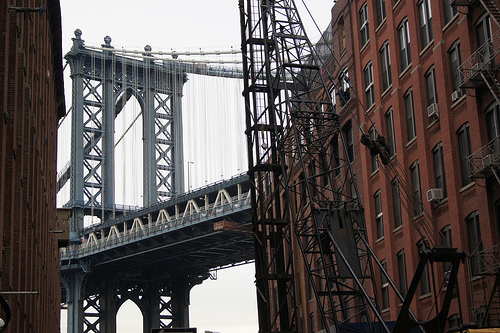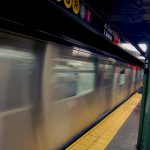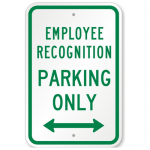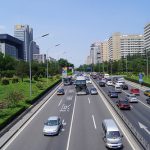Why we support Move NY
Newly indicted New York State Assembly Speaker Sheldon Silver killed New York’s congestion pricing plan in 2008. A followup plan to charge nearly all drivers heading into Manhattan is now in play, and we’re behind it.
Since Sheldon quietly smothered congestion pricing in its crib, we’ve added 5% to our population, nationwide vehicle miles traveled have rebounded from their credit-crunch lows, and New Yorkers are still stuck with backward-looking transportation policies that fail to address the value, importance, and risks of city car traffic, and that only encourage more of it while refusing to fund alternatives.
Why is Move NY a good idea?

Pols like Weprin think this neighborhood needs more drivers trying to get to that bridge. Image from jorkshire on flickr.
The space and money New York allocates to cars represents a tragedy of the commons: if you have a resource everyone’s supposed to share, and it’s free (or cheap) to use as much as you want, you’re going to use it a lot — never mind what it costs your neighbor.
At the moment, it costs $12.50 to drive on the George Washington Bridge during rush hour, but the East River bridges are free. Why? Is their upkeep free? Do we desperately want people driving through downtown Brooklyn? Inequalities like these affect not only the places where incentives encourage through traffic, but also development and property demand elsewhere – no wonder the New Jersey side of the bridge is all detached housing only a few blocks from the Hudson, while Brooklyn’s property values are skyrocketing.
While those might be OK choices to make, they should be choices, and not a consequence of scattered, piecemeal policy that has more to do with New York’s tangle of overlapping transportation agencies than creating solid, modern, optimized, safe routes for people traveling in Gotham. Note by contrast status quo defender and State Assemblyman David Weprin’s assertion in the New York Post:
…the proposal is based on an assumption that MTA bridges and tunnels will be permanently set at MOVE NY’s suggested pricing levels. In reality, both the state and city have limited jurisdiction over these bridges and tunnels and the MTA can still raise those tolls back up to the normal rates — or even higher — at its pleasure.
Learned helplessness must be the mating call of the New York City assemblyman; transit, cycling, and pedestrian advocates see it all the time.
In the meantime, transit funding for the city’s many hundreds of millions of trips per year is dependent on handouts (and unwise debt accumulation from a hostile governor and state legislature. No matter how many people use the MTA, its only hope is to bring in more revenue — a responsibility that roads don’t have to live up to. The precariousness of the MTA’s funding is a disgrace given how much money rides on it. Note the rhetorical slight of hand in Weprin’s condemnation:
At best, MOVE NY is a misguided attempt to balance the MTA budget on the backs of small to medium-sized businesses and the working middle class. At worst, it’s a bait-and-switch move to raise revenue in the guise of traffic decongestion.
Let’s look at this closely for a second. Is it misguided to balance the MTA’s budget and raise revenue, so maybe — someday –a city that’s quadrupled in size since it last added a subway line could consider adding (and paying for) capacity? Weprin seems to think so – and it’s doubly wrong to do it (in part) on the backs of drivers, even if that set of choices means losing a few pollution- and congestion-causing vehicle miles driven every day from the people who decide enough’s enough and they’ll just take the subway or a bike to work.
Weprin calls the people who will be paying the higher tab “small to medium-sized business and the working middle class,” but let’s be honest here, he just means his constituents in Eastern Queens, which is fine — it’s his job to represent these people. But his constituents represent a tiny and unrepresentative portion of New Yorkers, only around 10% of whom are foolhardy or unfortunate enough to drive into Manhattan for work every day. To pretend that the entire city’s transportation priorities should be shaped by that tiny sliver (who, let’s remember, pay lower rent in exchange for more painful commutes) seems deeply misguided.
Those who have to cross the East River while working will probably pay a little more, yes, and pass some of those costs on to their customers. Maybe it’s not crazy to think about at least fully funding the transportation system we already have instead of pretending we can rely on the state to step in every time we need to add capacity or bike routes. And just maybe making those decisions locally with money raised locally is better.
Oh, and those working-class and small businesses whose “trucks” Weprin says “now pay over $100 for a single trip across the George Washington Bridge?” That’s the price for a six-axle big-wheeler, not your Silverado.
David, please. SMBs don’t use six-axle vehicles all that much.
Why does this sign company care?
We get this a lot, because part of our business (roughly 20%) is dependent on organizing parked motor vehicles. We care about transportation in New York, though. Here’s why:
- We live here, too. It matters to us because the vast majority of our employees take the subway to work every day (or are multimodal), we live around here, and just because we acknowledge that cars do a lot of critical stuff doesn’t mean we think, “The more, the better.”
Indeed, we’re longtime supporters of Transportation Alternatives and supply 20 is Plenty signs to local activists.
- More organized parking is good for our business, not bad. It’s a law of thermodynamics: putting more stuff into less space creates pressure. Our products come in handy if you want to alleviate the inevitable friction among and between motorists. Limited parking and a skeptical attitude towards cars doesn’t mean our products are less useful, it means they’re more useful.
- We make safety products and we interact quite a bit with safety-related industries, so we know how dangerous cars are relative to just about every other everyday aspect of American life. We don’t have anything against cars or drivers per se — many of us don’t have a choice, and we’d love to see that change (in New York, at least, and other places where it can change).Let a thousand flowers bloom — but a few of those flowers, surely, can be cycling routes, decent sidewalks, and a subway system that isn’t put to shame by every European city you’ve ever been to.
- We want all of New York’s transportation to be as self-sustaining as possible. Money made through tolls and specifically allocated for local use is both more reliable and more flexible than money given to the city through the noblesse oblige of Assemblyman Weprin and politicians like him, who appear to want decisionmaking power as far from actual New Yorkers as possible.Don’t like tolls? Then pony up. You can’t both refuse to fund the multimodal improvements we need and refuse to allow us to get money in other ways.
Related Posts
Category: News

















